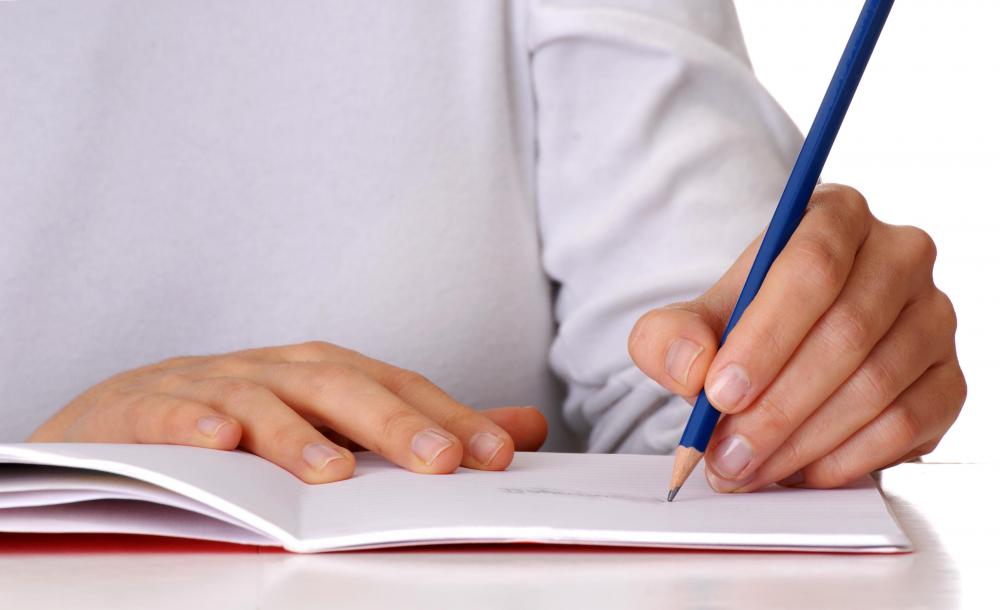At WiseGEEK, we're committed to delivering accurate, trustworthy information. Our expert-authored content is rigorously fact-checked and sourced from credible authorities. Discover how we uphold the highest standards in providing you with reliable knowledge.
What Are the Different Types of Dysgraphia Treatment?
Dysgraphia is a type of learning disability in which a person has difficulty writing, due to poor information processing skills, as well as poor motor skills. Thus, the affected person has trouble expressing his thoughts in writing and he also exhibits bad handwriting. In general, dysgraphia treatment involves using a variety of learning and coping strategies to improve these skills. Different strategies work for different people and, in addition, the measure of success varies as well.
Before discussing dysgraphia treatment, it is probably best to understand a little bit more about the disability itself. The exact cause of dysgraphia is unknown, and there are no clearly-defined standards with which to measure the condition. This means the diagnosis or acceptance that a person has the disability can vary depending on specific guidelines, such as those outlined by his school.

A person who simply has bad handwriting does not necessarily have dysgraphia. Oftentimes, a person who has dysgraphia demonstrates bad handwriting because he has trouble sequencing letters and words. For example, he might reverse letters in a word, or write words backward, thereby exhibiting poor spelling. In addition, a person with dysgraphia might have trouble visually processing what he is writing, thus displaying poor handwriting.

Finding the right dysgraphia treatment can be a lifelong challenge, but through instruction and practice, a person with the condition has a chance of improving his thinking and writing abilities. Since the developmental process that a person goes through changes as he grows, some strategies might apply more to persons of a certain age than others. For example, a child who is new to writing might benefit from using paper with raised lines to help him control the size and positioning of his letters. An older child might benefit from writing more fun or less stressful works outside of school, such as keeping a diary or writing lists. Teenagers and adults might make use of assistive technologies, like voice-activated software.

Of course, these dysgraphia treatment examples are not limited to those in the age groups in which they are presented. In addition, there are also a wide array of other strategies that a person with the condition can employ to improve his thinking and writing skills, such as taking more time to organize ideas and to write them down or breaking down big writing assignments into smaller, step-by-step undertakings. Typing is also always an alternative to handwriting, and though it might be important to learn handwriting, a person who struggles with it might find it easier to write on a computer.
AS FEATURED ON:
AS FEATURED ON:













Discuss this Article
Post your comments